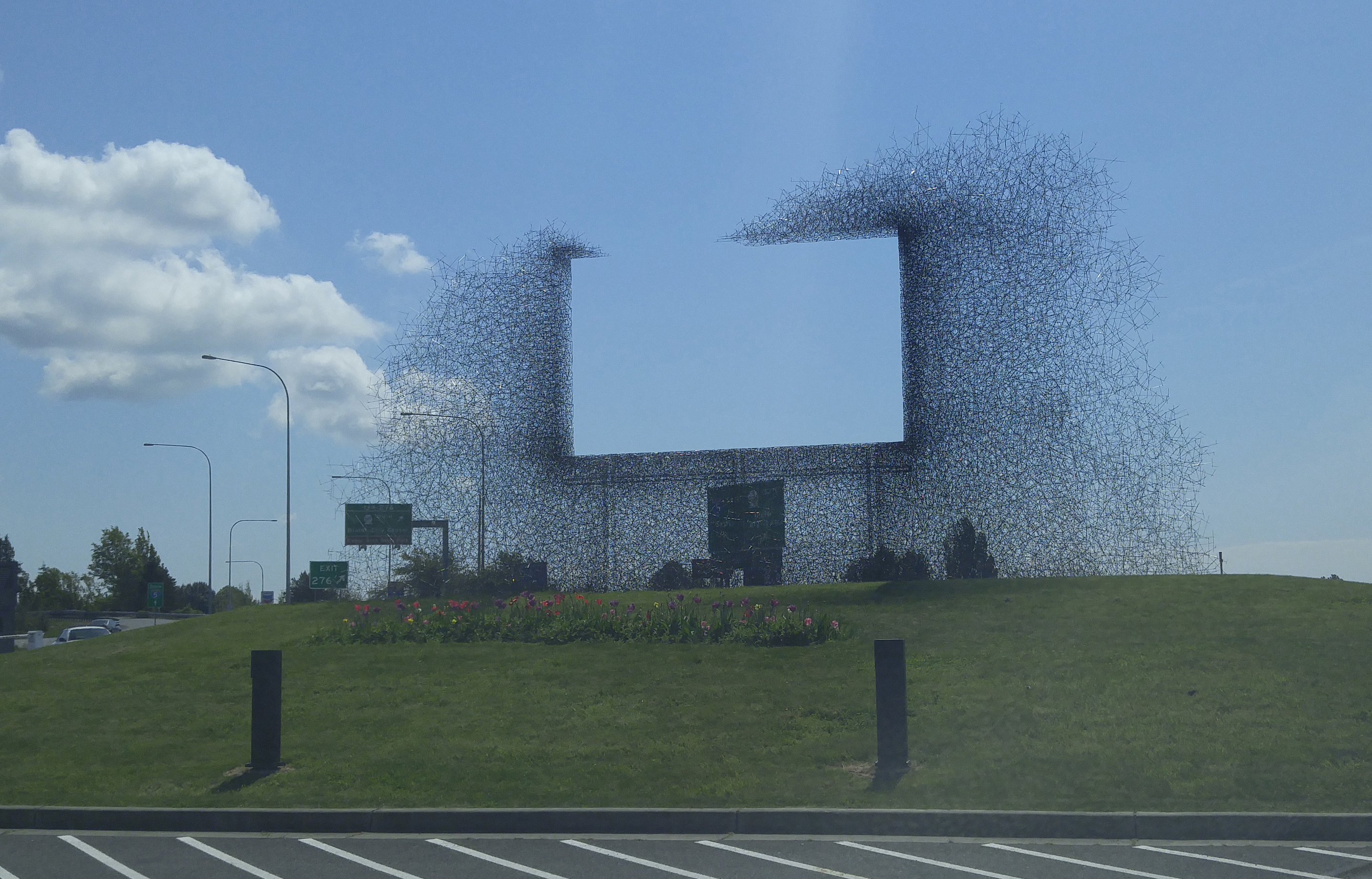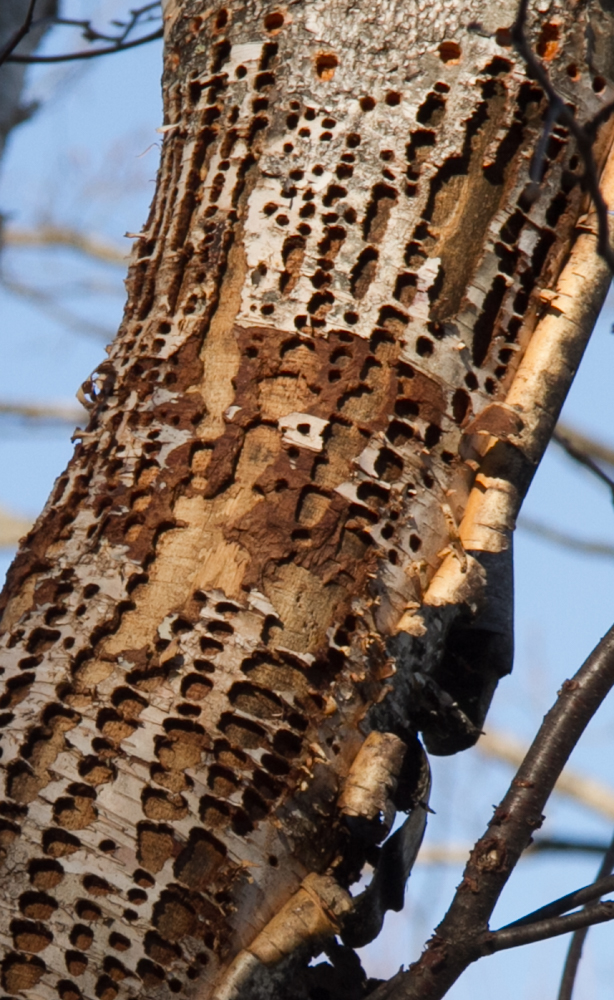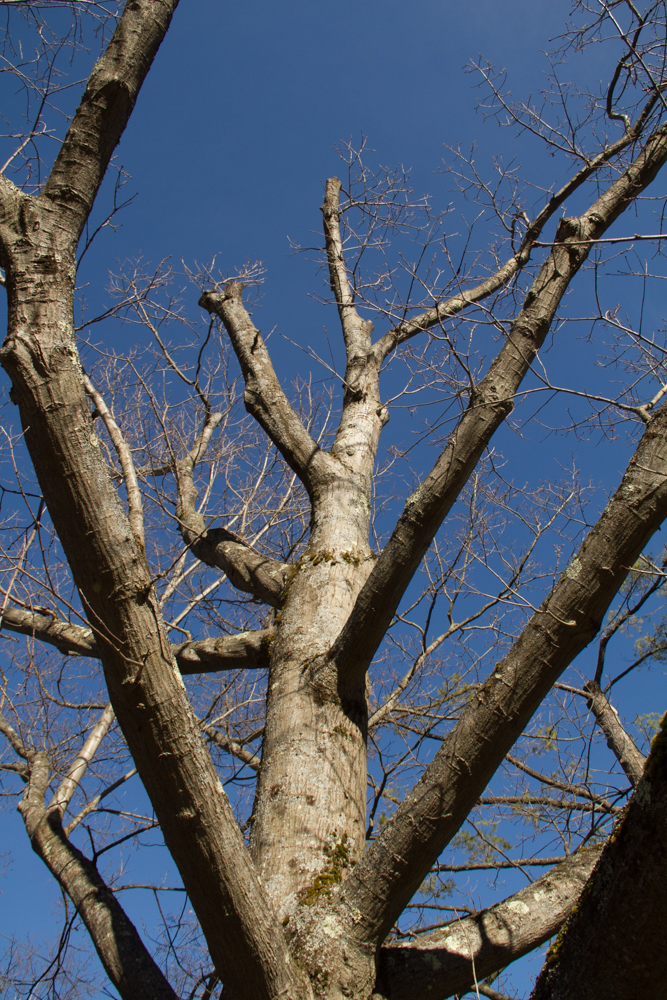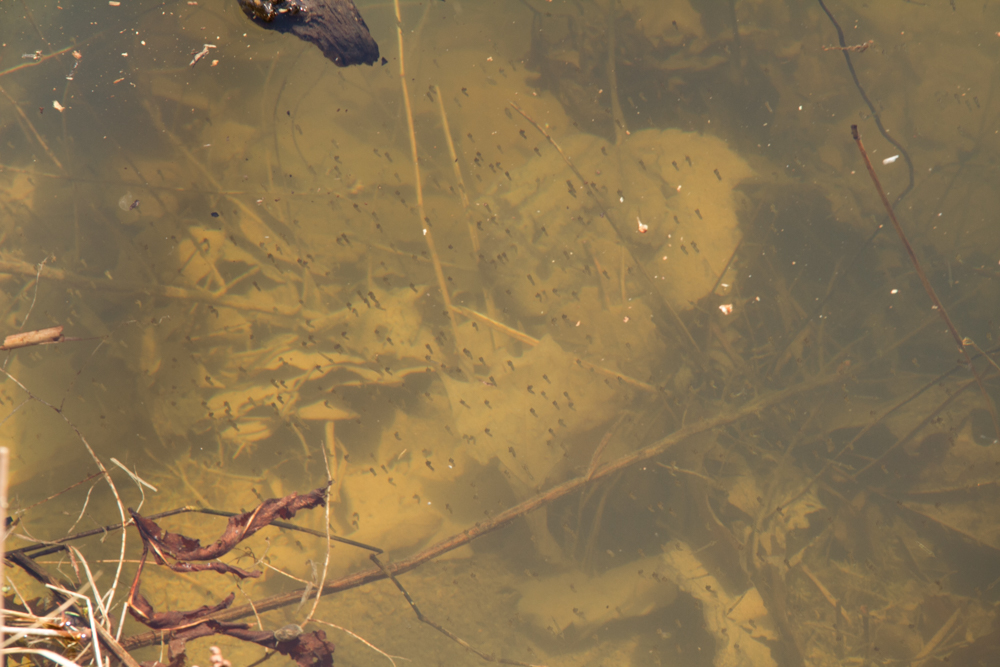My friend, the film-maker Tony Girardin, sent me a photo he took a few days ago when crossing the border between Vancouver and Seattle. He thought I might like it.
And I do. A lot.
At first I couldn’t figure it out. Was it a drawing? A painting? No, a sculpture, Tony said. A quick on-line search and I discovered that the swarm of bees flying away from that enormous empty space are welded steel rods. Non Sign II, by the Seattle artist and architect collaborative called Lead Pencil Studio, is a billboard advertising nothing. Or rather, announcing the condition of the atmosphere. When Tony crossed the border, the rods outlined a patch of clear blue sky. On another day, who knows what the sky would show? The bee/rods would fly away, regardless.

Photo courtesy of Tony Girardin. Tony’s current film, the award-winning Marinoni, is about an Italian-Canadian bicyclist who sets out to break a world speed record at the age of 80. It’s a real winner. Be sure to see it if you have the chance.
What that sign says about commerce and the environment is one thing. For me, seeing a sign that is a non sign got me thinking about the impact of empty space and what it says about ‘nothing,’ and about how easy it is to overlook emptiness and what it signifies.
Some ‘nothings,’ like insect tracks or holes pecked on tree trunks, reflect what happened in the past. But simultaneously they suggest what will happen in the future. How long can a tree like this survive?

So far, only the bark has been affected. Was it a downy woodpecker that made this grid-like design? Bird-lovers, give me the answer, please.
Sometimes we humans create the emptiness. Last year we had to remove sections of an old oak tree. The dead wood was dangerous. It had to go. But seeing how unnatural the chopped off ends appear, I feel regret and a bit of shame. Couldn’t we have done a better job? Something more aesthetically pleasing?

I’m hoping that the leaves will cover the stubby ends and allow the tree to show off its natural beauty.
On the positive side, an empty space opens up possibilities. The gap between the bits and pieces that make up this nest allows us to see through to the blue sky beyond. The delicate tracery suggests fragility but the nest survived at least one winter, maybe more. Who knows how long it will hang there?

What creature made this nest? I don’t think it was a paper wasp but then what? or who? Was it some kind of bird?
A sack of frog eggs attached to a twig under water is far from empty but it is a possibility that soon will become actual.

That white blob is the sack that holds the frog eggs. The eggs themselves are the tiny black spots inside it.
The tadpoles swimming in sunny water nearby attest to that.

Those black specks are the tadpoles. In a surprisingly short time, they will lose their tails and turn into frogs.
Billboards attract the eye away from the landscape that surrounds them. A billboard that is a non sign, simply a patch of sky, says something about how we can look without seeing.
That’s a big problem in many situations. In garden design, leaving ‘breathing room’ creates a counterbalance that is particularly important in a garden where a lot is going on. At Hidcote, the garden created by Lawrence Johnston at Hidcote Bartrim, Gloucestershire, the grass allée is an essential counterbalance to the complexity of the plantings and overall design.

Hedges define the long path that leads towards open country fields.
So many of us feel the urge — the need? — to fill every available space in our gardens. Maybe we are better off leaving empty space, creating the nothingness that allows our minds to relax, to go beyond the swarm of busy-ness to other possibilities and other dreams.
Do you make room for ‘nothing’ in your garden? Do you need to make more? Or would you rather fill every available space?
In next week’s blog post (assuming all goes according to plan), I’ll be writing about a woodland space that at this time of year is full to the brim of something beautiful. And tasty. Any guesses about what it is?





